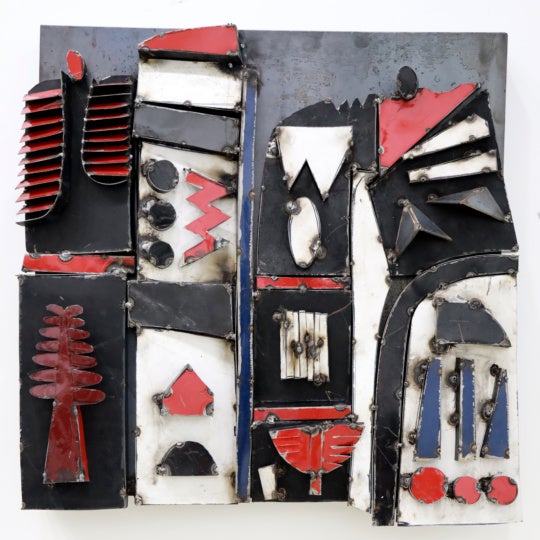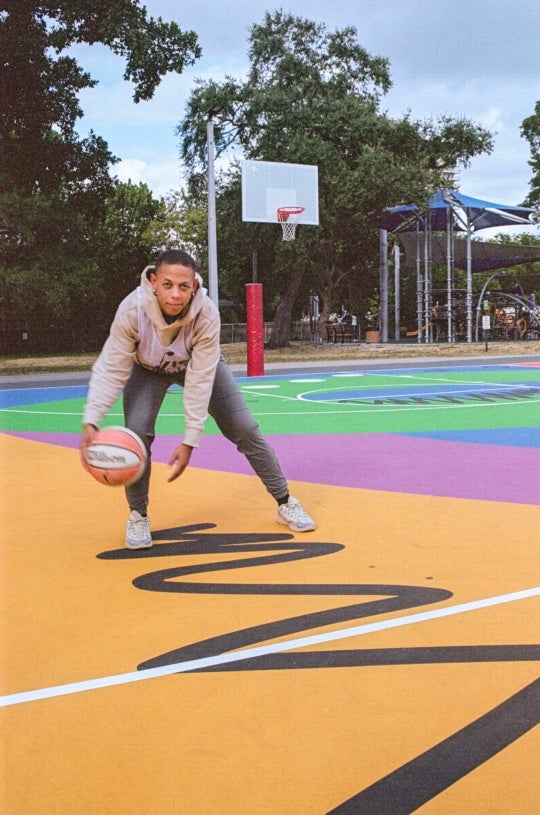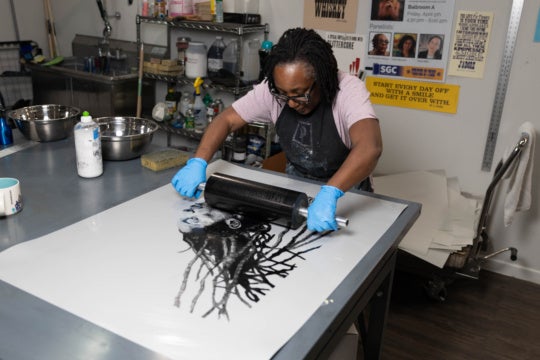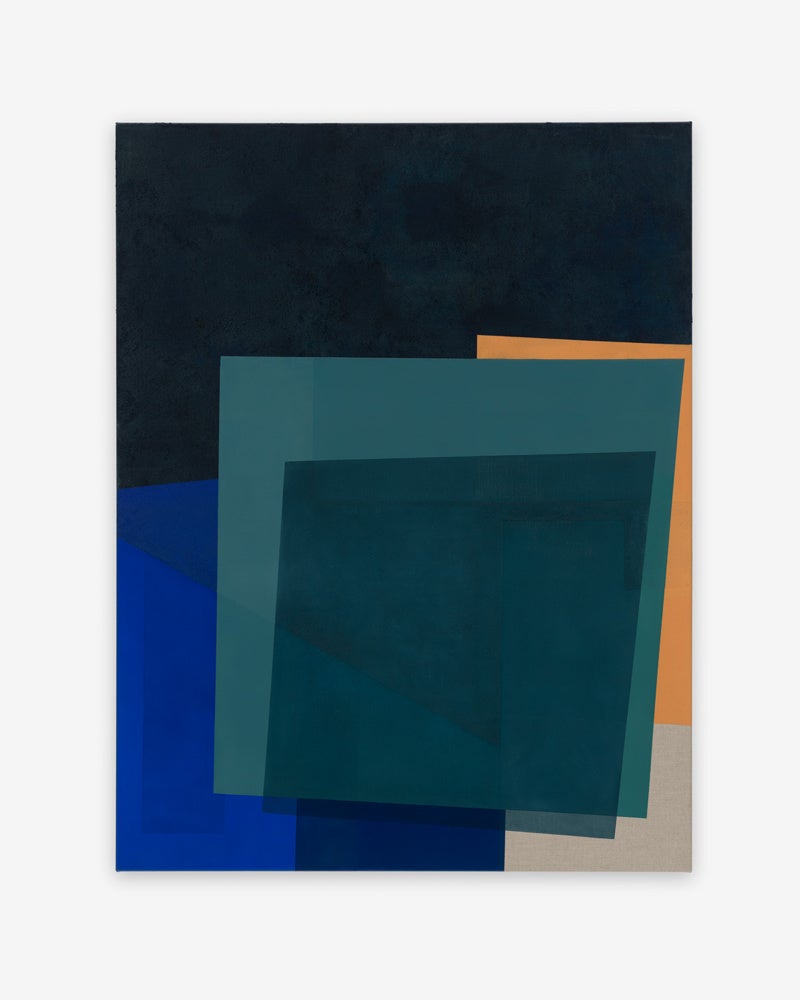
One painting greets me at the entrance to Blue Spiral 1 Gallery in Asheville, North Carolina: abstract, deceptively simple in its off-kilter intersection of geometric shapes. As I get closer, however, the complex interplay between tones and textures becomes apparent. Some sections are lusciously smooth, while others rumble with the unevenness of paint mix-ins, perhaps gravel. Even within a single color, multiple texture-scapes are often at play—black becomes iridescent, encapsulating a galaxy in its lacquered yet rugged surface. Caroline Collum’s Open Sea (2025) serves as an apt introduction to what lies beyond.
Outside the Lines, the three-story gallery’s main summer exhibition highlighting the work of seven female artists, explores contemporary abstraction in everything from large-scale paintings to small sculptures you could hold in your hand. Yet beyond this wide-ranging definition of abstraction, what these artists share is an irreverent approach to surfaces, constructing overlapping strata of meaning through unexpected texture and line, revelations of color and contour.
Displayed together, the diminutive sizes of Alison Croney Moses’ three Cedar Pods (2025)—ranging from three to nine inches in diameter—invite intimacy. Croney Moses is interested in notions of motherhood, and these are decidedly womb-like, transforming hardwood into something warm, gently curved, and touchable. They are almost like the nuts of a towering exotic tree, with removable tops that reveal a soothing wash of blue milk paint inside. Her other works on display, The Shape of Me and Us (2025), acrobatically curl back layers of walnut, exposing vibrant fields of color underneath. Meditating on the fragile resilience of the human body, they almost resemble strips of peeling birchbark or wallpaper; they, along with the Cedar Pods, question our notion of what the main surface is when multiple layers are on view.
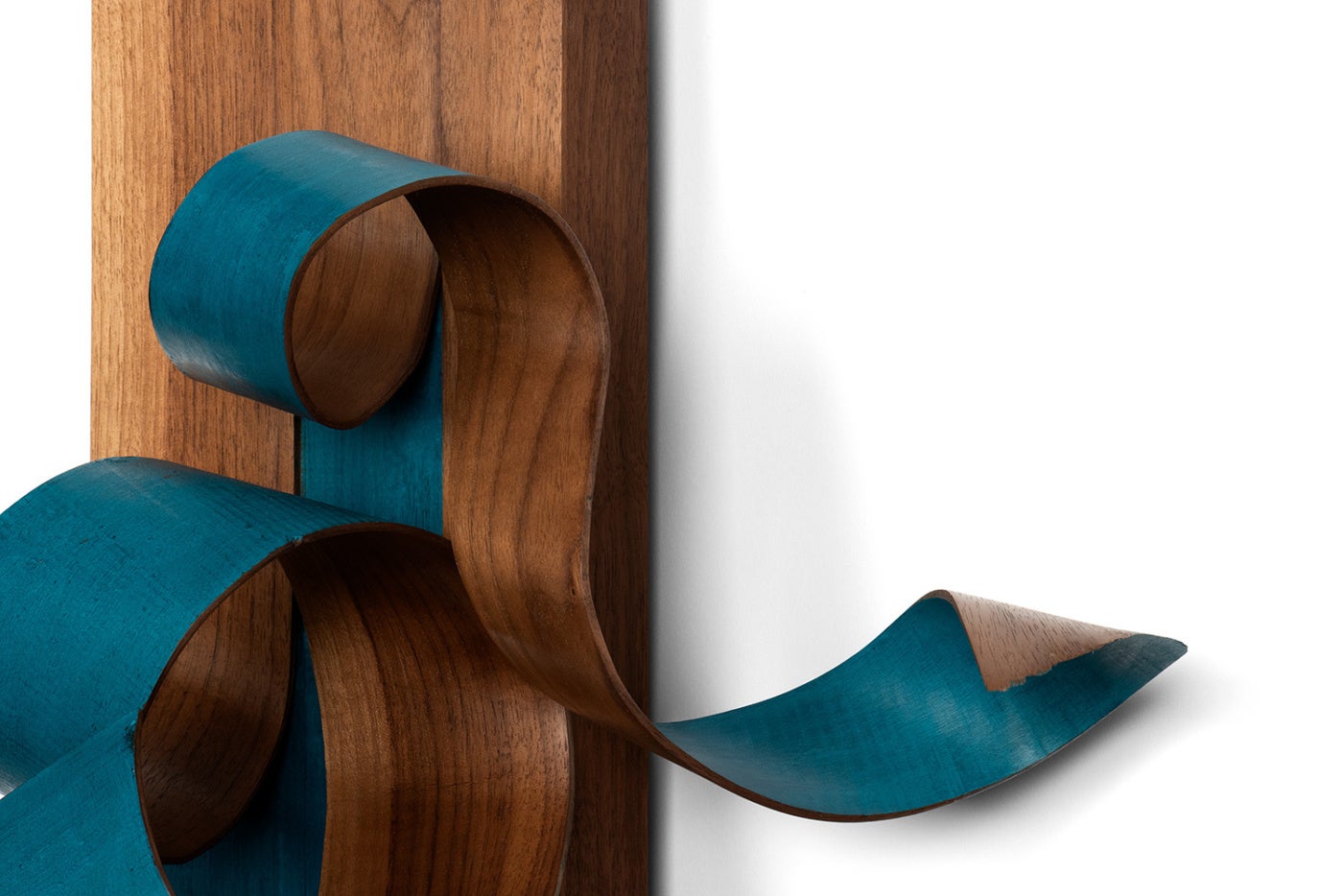
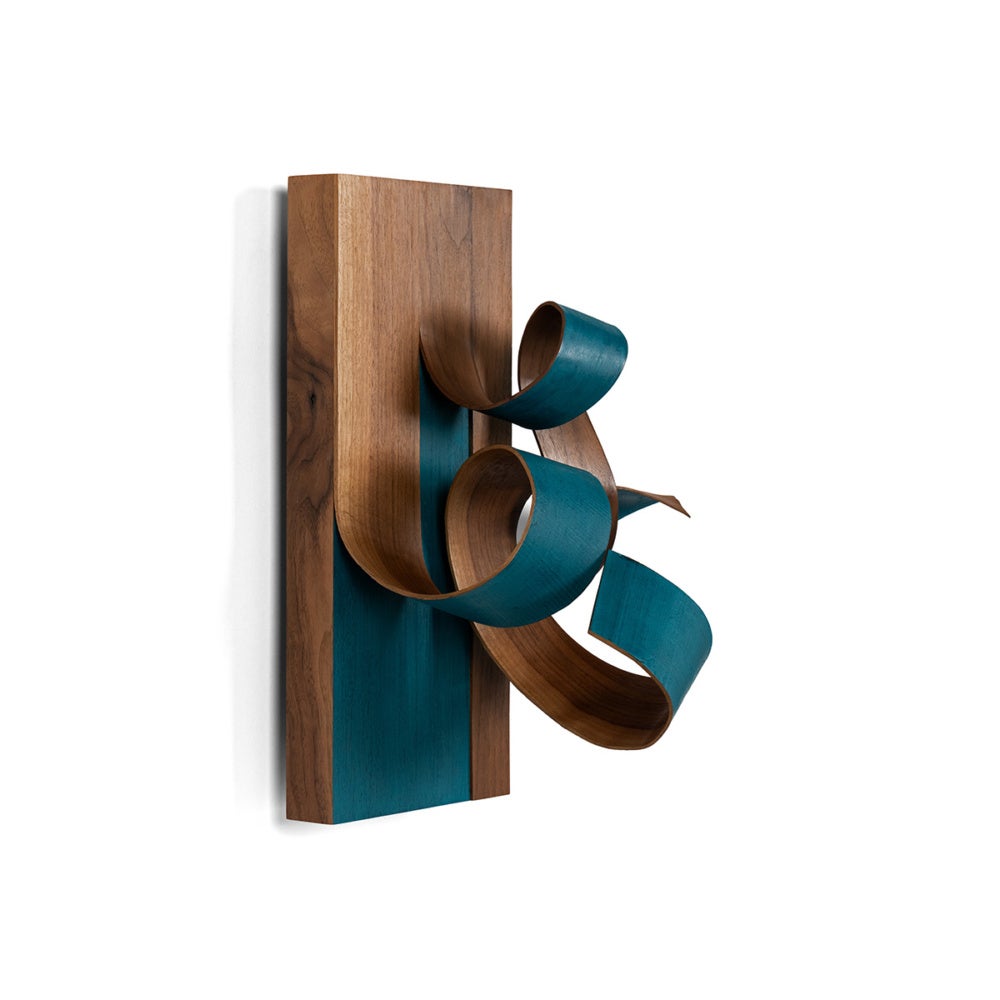
Maggie Jaszczak crafts minimalist ceramics, emphasizing the creation process through the raw simplicity of her earthenware materials. She employs an atmospheric firing technique, introducing a dissolved baking soda solution into the kiln at relatively low temperatures, which results in delightfully uneven, grainy surfaces when soda vapor reacts with the clay. Her oblique forms hover somewhere between ancient amphorae and futuristic set design—not unlike painter Caroline Collum’s works on display, these ceramics focus on angular shapes and lines. In contrast, Liz Pechacek’s jars, bowls, and vases are the most playful pieces in the exhibition, with bends, bulbous forms, and polka dots. Overall, they, too, show a thoughtfulness to carefully-crafted detail.

Southern painters Katie Walker, Kat Green, and Katherine Toler fill the walls with textural, expressive canvases that echo and magnify the sculptures’ surface-based approaches. Walker’s acrylic technique creates a roughly hewn, quilt-like effect that is immediately arresting in several four-by-six-foot canvases, featuring what she describes as “expressionistic ‘map-making’” of relationships and memory. While abstract, they give the sensation of being stitched together; multiple textures coexist within each painting, as though nebulous, hazy recollections were manifesting in irregular blocks of color.
Green also deals in the shifting impermanence of memory, capturing fleeting moments of feeling and energy in vivid tones and large, multi-painting arrangements. These washes of color are often punctuated by thin, definitive lines that, at their best, subtly energize the paintings, but at times seem to interrupt their flow. They are almost graffiti-like in their apparent randomness, as if another artist snuck in a few mischievous brushstrokes as the paintings dried. Toler’s canvases, on the other hand, nearly approach the figurative. Her muted tones and simple shapes make her works look like blurred stones in a stream, or close-up views of floral, animal, and landscape patterns.
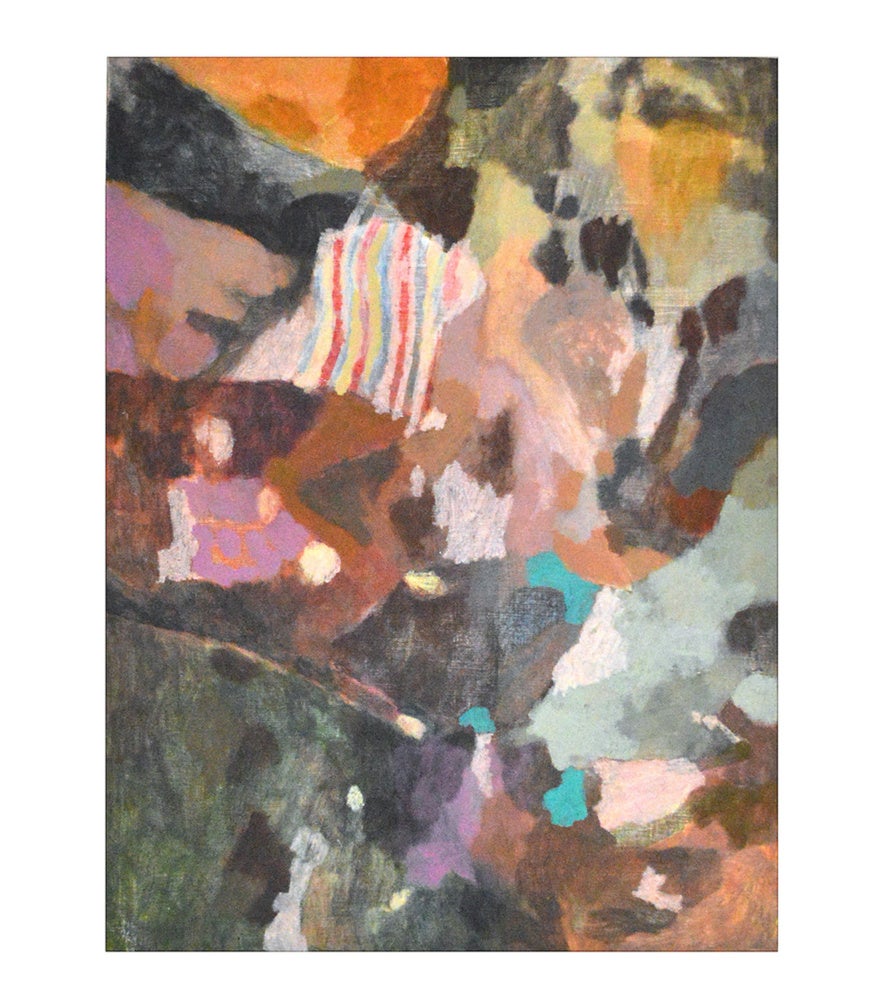
Sarita Westrup’s wall works blur the line between painting and sculpture, with interwoven vortices of reed and mortar covered in paint made from the crushed bodies of cochineal insects. In both materials and process, embodied in the pieces’ textured blue-and-red surfaces, her bicultural Mexican-American heritage comes through. Cochineal has been used as a natural pigment in Mesoamerica for millennia, and her basketry technique is reminiscent of the woven sculptures of Ruth Asawa, whose 1940s experiences studying crafts with Cuban-Mexican designer Clara Porset and wire basket-making with artisans in Toluca, Mexico, had a lasting career influence.
Many of the pieces speak to one another in unexpected ways. Croney Moses employs abstract forms to evoke the body’s warm embrace, while Toler’s paintings and Pechacek’s sculptures seem to teeter on the edge of abstraction altogether, approaching figuration. Green’s and Walker’s paintings embrace an emotive, expressionistic tradition, yet yield profoundly distinct results. Working within diverse aesthetic sensibilities and techniques, these seven artists challenge us to linger on the surfaces of their work. They imbue this outer layer with visual significance, from the peeling layers of wooden bodies to the rich hues of cultural tradition, from the rawness of soda-fired earthenware to the subtly cerebral patchwork of canvas and acrylic.
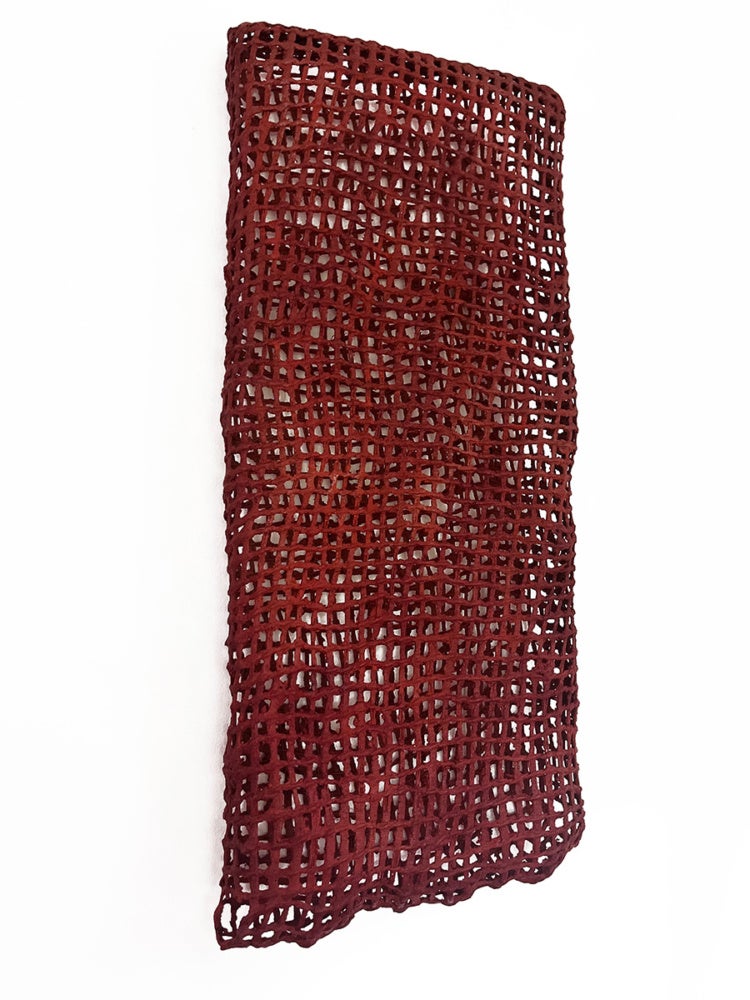
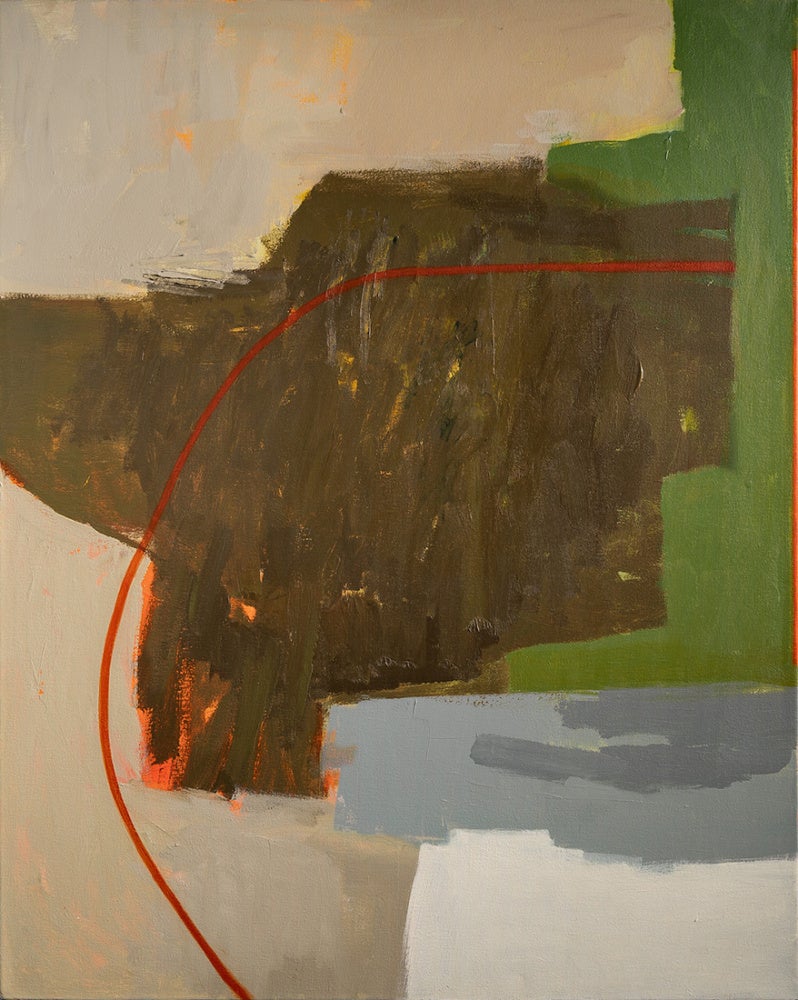
Outside the Lines is on view at Blue Spiral 1 in Asheville, North Carolina, through August 27, 2025.

